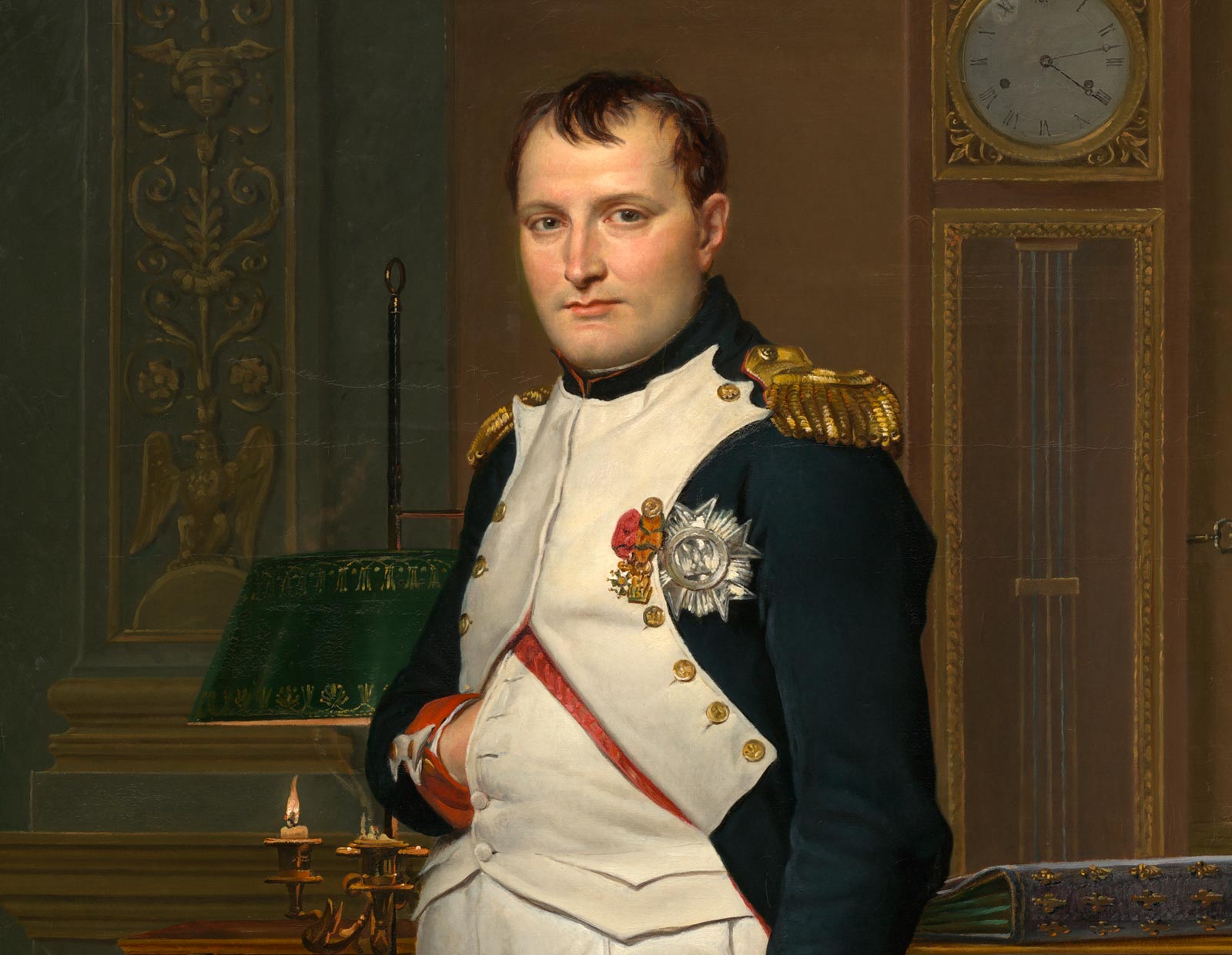Other details are concrete symbols of Napoleon’s indomitable rule. A map partly unrolled on the floor, sword propped in the chair, and lion finial of the desk represent him as a conquerer, prepared for battle. The blue uniform with red cuffs is that of the foot grenadiers of the Imperial Guard; Napoleon preferred to wear soldier’s garb on certain dress occasions to signify solidarity with his troops. Under the desk, Plutarch’s volume Lives of the Noble Greeks and Romans associates Napoleon with the great leaders of the past. Decorative golden bees sewn into his velvet chair are a 5th-century emblem associated with the first French rulers. Note the letter “N” carved into the legs of the desk. This artfully contrived yet realistic tableau reveals itself to be a masterful work of propaganda.
It may seem unusual that a Scotsman would commission a French painter to create such a work. The marquess (later 10th Duke of Hamilton) was an avid art collector and Francophile. He also harbored grander ambitions and commissioned the painting in the interest of fostering friendship between France and Scotland, choosing David, Napoleon’s official painter, for his project in cultural diplomacy.
Before dispatching the painting to the marquess, the artist hosted a private exhibition of the completed picture in his studio, where the work was widely admired and said to be an excellent likeness. The image influenced many subsequent portrayals of Napoleon—the hand in the waistcoat gesture connoting self-control became his motif—and introduced a new kind of realism to French painting.










